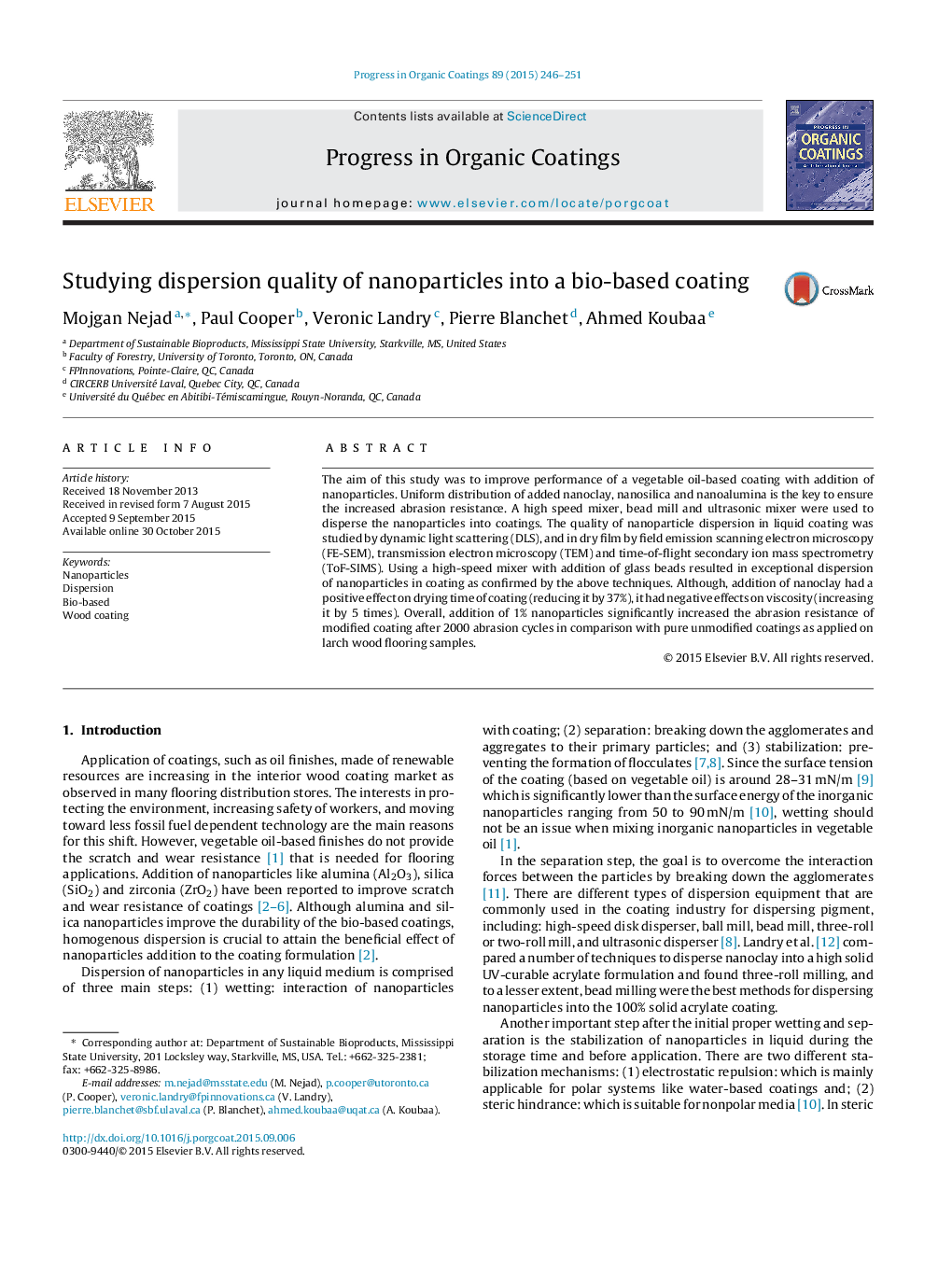| Article ID | Journal | Published Year | Pages | File Type |
|---|---|---|---|---|
| 692272 | Progress in Organic Coatings | 2015 | 6 Pages |
Abstract
The aim of this study was to improve performance of a vegetable oil-based coating with addition of nanoparticles. Uniform distribution of added nanoclay, nanosilica and nanoalumina is the key to ensure the increased abrasion resistance. A high speed mixer, bead mill and ultrasonic mixer were used to disperse the nanoparticles into coatings. The quality of nanoparticle dispersion in liquid coating was studied by dynamic light scattering (DLS), and in dry film by field emission scanning electron microscopy (FE-SEM), transmission electron microscopy (TEM) and time-of-flight secondary ion mass spectrometry (ToF-SIMS). Using a high-speed mixer with addition of glass beads resulted in exceptional dispersion of nanoparticles in coating as confirmed by the above techniques. Although, addition of nanoclay had a positive effect on drying time of coating (reducing it by 37%), it had negative effects on viscosity (increasing it by 5 times). Overall, addition of 1% nanoparticles significantly increased the abrasion resistance of modified coating after 2000 abrasion cycles in comparison with pure unmodified coatings as applied on larch wood flooring samples.
Related Topics
Physical Sciences and Engineering
Chemical Engineering
Process Chemistry and Technology
Authors
Mojgan Nejad, Paul Cooper, Veronic Landry, Pierre Blanchet, Ahmed Koubaa,
